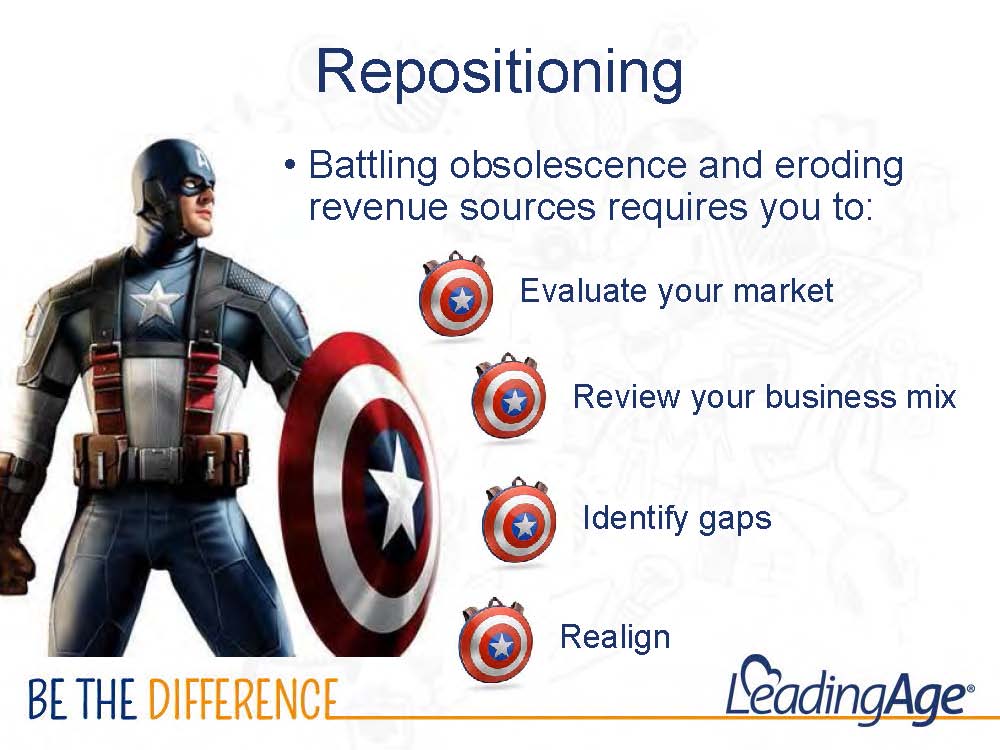This post is part of a series sharing inspiration and actionable insights from the 2016 LeadingAge Annual Meeting, for non-profit senior living communities and service providers – “organizations dedicated to making America a better place to grow old.” Click here for related posts.
Session: A Repositioning Case Study: Designing for a Healthier, Longer Life
Speakers: Alejandro Giraldo, THW Design; Jake Friend, THW Design; Steven Still, Marquette senior living
Expansions and repositionings are happening in communities across the country.
Repositioning: Investing in the physical redevelopment of an existing brick and mortar community to add space and reconfigure existing square footage in an effort to compete with newer entities and be more relevant in today’s market.
For senior living providers, repositionings are important and necessary to ensure we continue to serve the residents of today and plan for the residents of tomorrow.
The education schedule at the recent LeadingAge Annual Meeting confirms this trend. No fewer than eight sessions either focused on repositioning or had repositioning strategies as a learning objective.

At this session, Indianapolis’ Marquette shared their experiences. Marquette just went through a multi-year, 55-million-dollar repositioning campaign.
I heard seven key takeaways from this session that should be considered by any senior living community going through this process:
1. Don’t only focus on the building or buildings you’ll be developing. Keep in mind the exterior of the community and how that space can contribute to overall wellness (think walking trails, gardens, etc).
2. You can use the exterior and interiors to ensure a “resident centered design.” This is design that reinforces an active lifestyle, encourages social interaction among residents to combat isolation and is overall is designed for health and wellness.
3. Keep the 90/90 rule in mind: You have 90 seconds and 90 feet to make a first impression to prospects. It begins when they drive onto the property.
 4. Give creative names to spaces to make them a destination. For example, Marquette named their fitness space Marquette Athletic Center or MAC. This branding has been embraced by staff and residents alike and made the fitness area a more desirable amenity.
4. Give creative names to spaces to make them a destination. For example, Marquette named their fitness space Marquette Athletic Center or MAC. This branding has been embraced by staff and residents alike and made the fitness area a more desirable amenity.
5. For landlocked communities it is even more important to take a hard look at walkways and green space. Ensure there is both pedestrian connectivity (an easy flow from place to place that encourages residents to move around campus) and space for congregation (room to stop and talk with neighbors).
6. Keep residents engaged and informed from the beginning. You’ll need to communicate consistently and in numerous ways to ensure buy-in and excitement.
7. Strategic planning for the next repositioning should begin as soon as current repositioning is completed. This will ensure your senior living community is always thinking forward and innovating.


